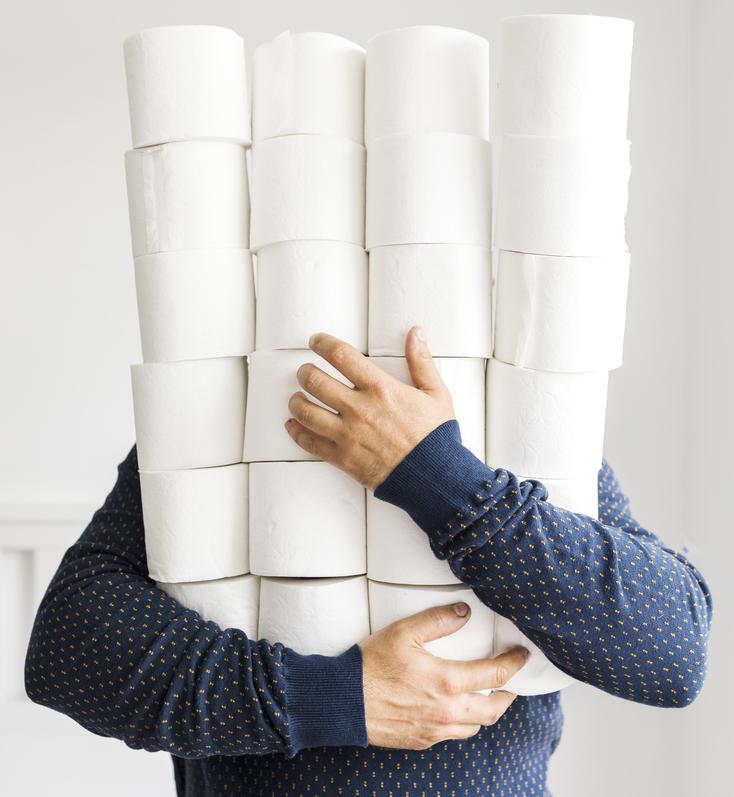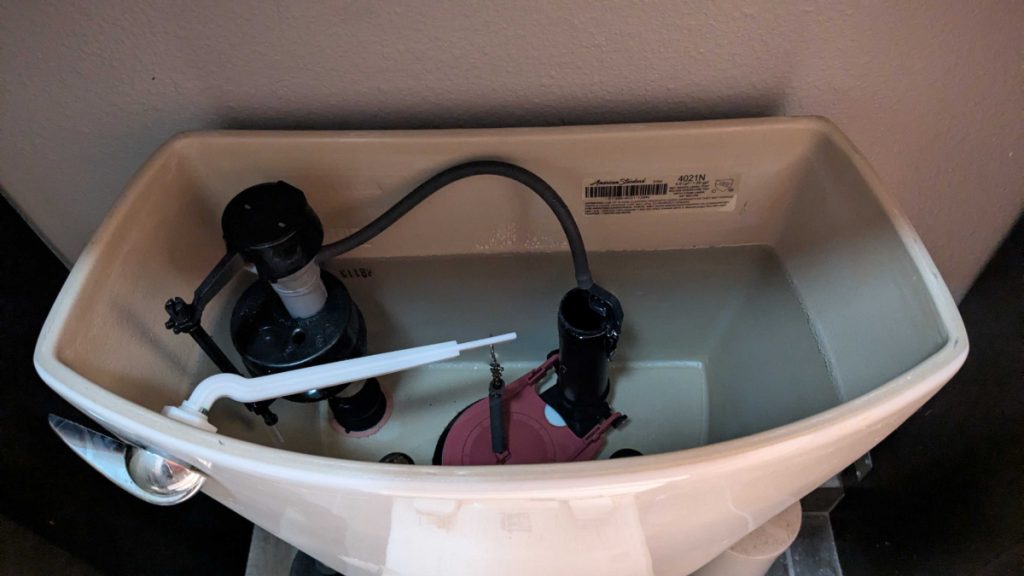What’s Causing It and How to Fix It
A toilet that keeps overflowing after flushing is more than just inconvenient—it’s stressful, messy, and potentially damaging to your home. Whether it’s a one-time accident or a recurring issue, if your toilet keeps overflowing after a flush, it could signal a problem that needs more than just a quick mop-up.
If your toilet keeps overflowing, you’re probably wondering: Why is this happening? What can I do to stop it? And when should I call a plumber? This guide will walk you through everything you need to know—from immediate steps to take to long-term solutions that restore peace of mind and proper plumbing function.
What Happens Inside the Toilet When You Flush?
Understanding how a toilet works can help make sense of why it’s overflowing. Inside the toilet tank, water is stored until you press the handle or push a button to flush. That water flows rapidly into the toilet bowl, helping to clear waste through the toilet trap and into the drain system.
As the tank empties, the fill valve turns on to refill it. A float ball rises with the water level in the tank and signals the valve to stop when it reaches a specific height. There’s also an overflow tube in place to prevent the tank from overflowing if something fails.
When everything functions properly, this cycle takes just a few seconds. But if something is broken, clogged, or set too high, your toilet can flood, back up, or keep refilling indefinitely—leading to serious water waste and potential damage.
Is It a One-Time Overflow or All-The-Time?
This is one of the first questions to ask yourself. A single overflow might just be the result of a one-time blockage—maybe too much toilet paper was used, or a foreign object got flushed by mistake.
But if it happens often—like every time you flush—it could be a clogged drain, broken tank components, something down the line, or a septic tank problem. Consistent overflows aren’t just annoying–they can be a sign of major plumbing issues brewing below the surface.
Common Reasons Your Toilet Keeps Overflowing After You Flush
 There are a lot of reasons your toilet may be overflowing. Some are mechanical, some are related to bad habits, and others are tied to your home’s larger plumbing or sewer system. If you’re dealing with excess water on the floor after each flush, one of these issues is likely to blame:
There are a lot of reasons your toilet may be overflowing. Some are mechanical, some are related to bad habits, and others are tied to your home’s larger plumbing or sewer system. If you’re dealing with excess water on the floor after each flush, one of these issues is likely to blame:
- Clogged drain or toilet trap
- Fill valve malfunction
- Water level in the tank set too high
- Faulty float ball
- Broken or disconnected overflow tube
- Sewer line blockage or backup
- Septic tank backup or failure
- Too much toilet paper or improper flushing habits
- Worn flapper not sealing properly
Let’s explore each of these in more detail.
Clogged Drain or Toilet Trap
A common reason for a toilet overflow is a blockage in the toilet trap or drain. This might be caused by too much toilet paper, non-flushable items (like wipes or paper towels), or a buildup of waste. When a clog occurs, the water from the tank has nowhere to go but up—and eventually out of the bowl.
Using a plunger is often the first step, but if you’ve tried and the clog persists, it’s time to call in a professional plumber who can clear the line with a drain snake or auger.
Fill Valve Malfunction or Failure
The fill valve is responsible for refilling the tank after a flush. If it’s malfunctioning, the tank may continue to fill beyond what it’s designed for. This can cause the water to rise and overflow if the overflow tube isn’t working properly either.
A faulty fill valve might make a hissing or whistling sound—or the tank may never seem to stop running. Replacing the valve is a straightforward job for a plumber and can save gallons of water per day.
Water Level in the Tank Is Set Too High
If the water level in the tank is set too high, water may rise above the overflow tube, leading to a continuous cycle of filling and draining. Eventually, that excess can spill into the bowl and cause it to overflow—especially if the flush capacity is limited.
Adjusting the water level usually involves repositioning the float. But if you’re not comfortable tinkering with internal parts, a plumber can make the adjustment safely and quickly.
Float Ball Isn’t Working Correctly
The float ball tells the fill valve when to stop. If it’s misaligned, water may continue filling the tank, resulting in overflows. A cracked or waterlogged float won’t rise correctly and should be replaced.
Modern toilets sometimes use a float cup instead of a ball, but the principle is the same—if the float fails, the system can’t regulate itself.
Overflow Tube Problems
The overflow tube inside the tank is designed as a fail-safe: if the water level gets too high, the tube redirects the excess into the toilet bowl. But if the tube is broken, cracked, or disconnected, it may not do its job—allowing the tank to fill until it spills.
This often goes unnoticed because the overflow tube sits in the middle of the tank. A plumber can inspect and replace it if needed.
Too Much Toilet Paper or “Unflushables”
Even the best toilet can only handle so much. Flushing excessive toilet paper, or worse—non-flushable items like hygiene products or wipes—can easily lead to blockages. These habits are among the leading causes of overflowing toilets, especially in homes with older or low-flow fixtures.
Encouraging household members to use reasonable amounts of paper and avoid flushing anything other than waste and TP can go a long way toward preventing overflows.
The Flapper Isn’t Sealing the Tank Properly
 The flapper is a rubber valve at the bottom of the tank that lifts during a flush to release water into the bowl. If it doesn’t close correctly afterward, water can leak constantly from the tank, either raising the level in the bowl or forcing the fill valve to stay on indefinitely.
The flapper is a rubber valve at the bottom of the tank that lifts during a flush to release water into the bowl. If it doesn’t close correctly afterward, water can leak constantly from the tank, either raising the level in the bowl or forcing the fill valve to stay on indefinitely.
Replacing a worn or misaligned flapper is often a quick, inexpensive fix—but it’s one that makes a big impact on water efficiency and toilet performance.
What to Do Right Away: Turn Off the Water Supply
If your toilet is overflowing right now, shut off the water supply immediately. You’ll find a valve behind or beside the toilet, near the floor. Turn it clockwise until the water stops flowing.
This won’t fix the underlying problem, but it will stop the flood and give you time to assess next steps. Avoid flushing again until the issue has been resolved.
Can You Fix It Yourself—or Should You Call a Plumber?
Some minor toilet issues can be resolved without professional help. If you’re comfortable, you can try plunging a clog, adjusting the float or fill valve, or replacing an old flapper. YouTube videos make these tasks seem simple—and sometimes they are.
But if your toilet continues to overflow after trying those fixes—or you notice sewage smells, standing water, or signs of backup in other fixtures—call a professional plumber. Persistent toilet overflows often point to bigger system issues that require tools, training, and full-system diagnostics.
Is an Overflowing Toilet a Sign of a Bigger Problem?
In some cases, yes. A constantly overflowing toilet might be the tip of the iceberg. It could indicate:
- A broken or blocked sewer line that’s affecting all your home’s drains
- A septic tank that’s full, damaged, or failing
- Aging internal parts that need full toilet replacement
That’s why Meticulous Plumbing always looks at the entire picture. We don’t just stop the symptom—we find the root cause and help you prevent future issues before they start.
Why Homeowners Trust Meticulous Plumbing for Toilet Overflow Issues
At Meticulous Plumbing, we take toilet problems seriously—not just because of the mess, but because we know how stressful these situations can be for families. Whether the fix is a quick valve adjustment or line replacements in the home, we approach every job with the same values:
- Respect for your home: clean appearance, shoe covers, and tidy job sites
- Clarity in communication: no confusing jargon or surprise costs
- Permanent solutions that address the root cause, not just the surface issue
- Preventive mindset with whole-house plumbing inspections available
We also responsibly recycle old materials, clean up after every job, and keep you informed every step of the way.
Toilet Keeps Overflowing After Flush FAQs
Why does my toilet overflow even when it’s not clogged?
If your toilet overflows without an obvious clog, it could be due to a faulty fill valve, misaligned float ball, or the water level in the tank being set too high.
Can the fill valve cause my toilet to keep overflowing?
Yes. A malfunctioning fill valve may allow the tank to overfill and spill into the bowl continuously. If the overflow tube isn’t catching the excess water, this can lead to an overflow situation. Replacing the fill valve is usually a straightforward fix.
How do I adjust the water level in the toilet tank?
Inside the tank, locate the float—either a ball or a cup-style mechanism. There’s usually a screw or clip you can adjust to lower the float, which reduces the maximum water level. If you’re unsure or it doesn’t respond, call a plumber.
What’s the difference between a toilet trap and a sewer line clog?
A toilet trap clog is usually close to the bowl and caused by paper or small objects. A sewer line clog is outside of the home and affects multiple fixtures in your home.
Is it bad to flush too much toilet paper at once?
Yes. Even flushable toilet paper can clog the trap or pipes when used in excess. Encourage smaller amounts per flush and never flush wipes, paper towels, or hygiene products—even if they’re labeled “flushable.”
Still Dealing with an Overflowing Toilet?
Don’t wait for water damage or a plumbing emergency. If your toilet keeps overflowing after each flush, trust Meticulous Plumbing to solve the issue the right way—from inside the tank to deeper down the line.
Call us today for fast, respectful, and professional service. We’ll inspect your entire system, explain the problem clearly, and deliver a lasting solution—so your toilet (and your peace of mind) stays under control.


